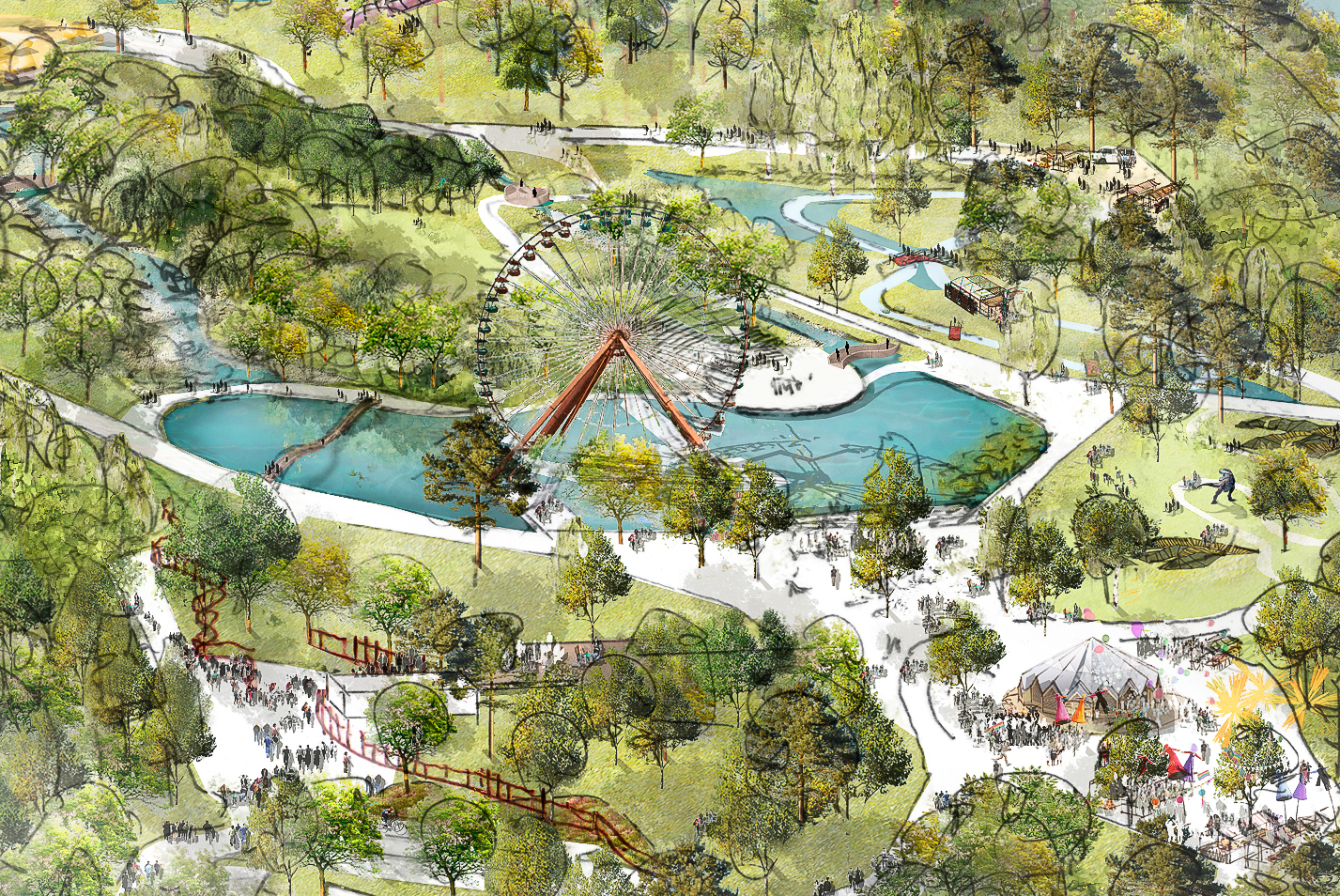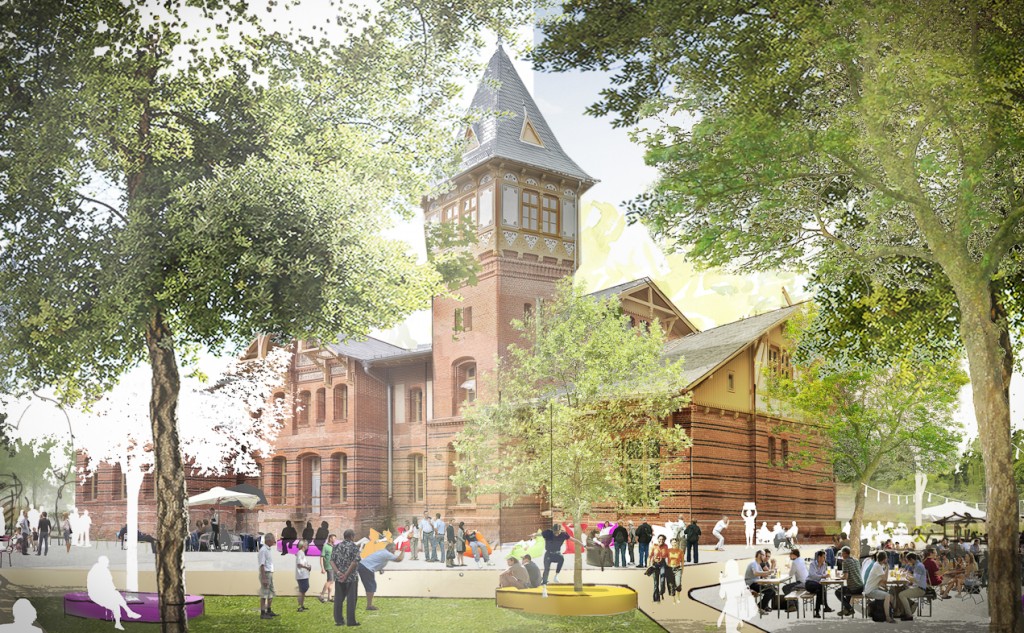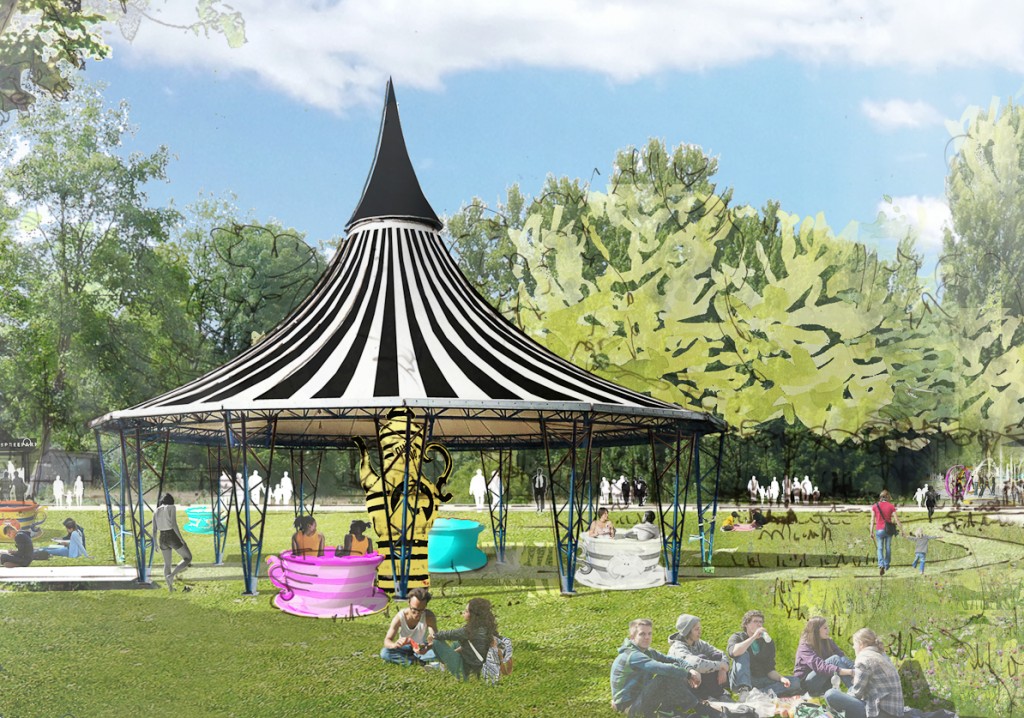The past and future of Berlin’s Spree Park
Berlin’s best-known lost place on the Spree River is becoming a new type of park.
Nature, culture and art are the guiding principles for the future transformation of the 24-hectare area. The Spree Park is a green transformation project in the southeastern Spree region of Berlin, aimed at a sustainable future.
The new park integrates many elements of the landscapes’ changeful history.
The southeastern Spree area -career of an urban waterscape
Since the 18th century, the Spree River landscape southeast of the city center has been used for recreational purposes by Berlin’s urban population. Berlin’s aristocracy built villas for summer retreats on the Stralau peninsula, which was considered a climatic health resort.
In the 19th century, the area became a weekend destination for Berlin’s growing urban population. The Plänterwald, for example, which had been reforested since 1843, served as a morning outing for the new bourgeois middle class.
In 1876, the 88-hectare Treptower Park was opened. It was planned by Gustav Meyer, director of Berlin’s public parks and a student of Peter Lenné. Restaurants with terraces and landing stages for pleasure boats followed on the banks of the Spree.
The highlight of this period was the opening of the Berlin Trade Exhibition in 1896, a showcase of the building trades following an economic crash years before, with many retrostyled architectures and attractions -Some temporary, some permanent. The historicizing architectures tried to create different atmospheres within the landscape space. The Abbey, Island of Youth, Archenhold Observatory, an artificial pyramid with a palm grove.
In the thirties of the 20th century, the first amusement parks with rides are created, the last one closes with the beginning of WWII in 1939.
The simultaneous migration of industry occupied the banks of the Spree for transportation, the cooling of machinery and the discharge of dirty water. Among others, glassworks, a palm oil factory, the AEG at Treptower Park, and finally the large Klingenberg power plant opposite the Spreepark appeared in 1927, which turned the sky black.
The period of the “Plänterwald Cultural Park”
For the 20th GDR-State-anniversary, a 90-hectare cultural park was planned that included parts of the neighboring Plänterwald. Finally a scaled-down version, the 29-hectare “Kulturpark Plänterwald” is opened on October 4, 1969, on the site of a former tree nursery. It was the largest permanently open amusement park in the GDR. The diverse rides, presented on a largely asphalted surface, arouse particular enthusiasm.
In 1979, the neighbouring Plänterwald forest is designated as a protected landscape area, and as early as 1975, the chimneys of the Klingenberg coal-fired power plant were renewed and equipped with electrostatic precipitators in the course of modernization.
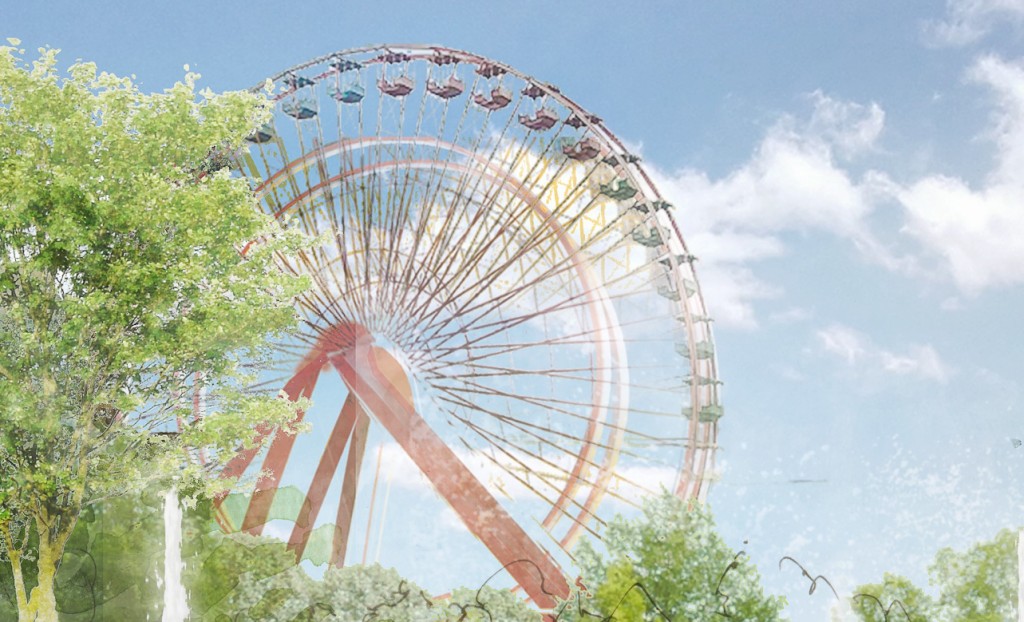
The Red Ferris Wheel of the GDR-Park has become the iconic landmark for Plänterwald forest. Source: Grün Berlin GmbH.
The period of the “Spree Park amusement park”
After reunification, the entrepreneur and showman Norbert Witte bought the cultural park from the district in 1991. The new name “Spree Park”, picks up the location at the water. His idea is to make the theme of water the motto of his theme park.
He invests in the large-scale redesign of the area. Water surfaces and canals are created and newly acquired rides whiz through artificial rocky landscapes and backdrop forests.
The “Lost Place” period
Ten years later, the facility is closed due to the owner’s insolvency. The rides and buildings fall into disrepair, and nature reclaims the land. The fence of the facility looks increasingly holey and the park stages nightly parties over the years.
Photos of the Spree Park as a lost place, disseminated via social networks such as Flickr or Instagram, give the place international attention for the first time. This is also monetized in the years 2009-14 in the first guided tours on site. Finally Hollywood discovers the dark qualities of the park as abandoned place for the final sequence of Joe Wright’s “Hanna” (2011). In 2014, the backdrop town of Old England burns down in a nighttime fire. At this time the park is inaccessible to the general public, which means it is not a Public Place.
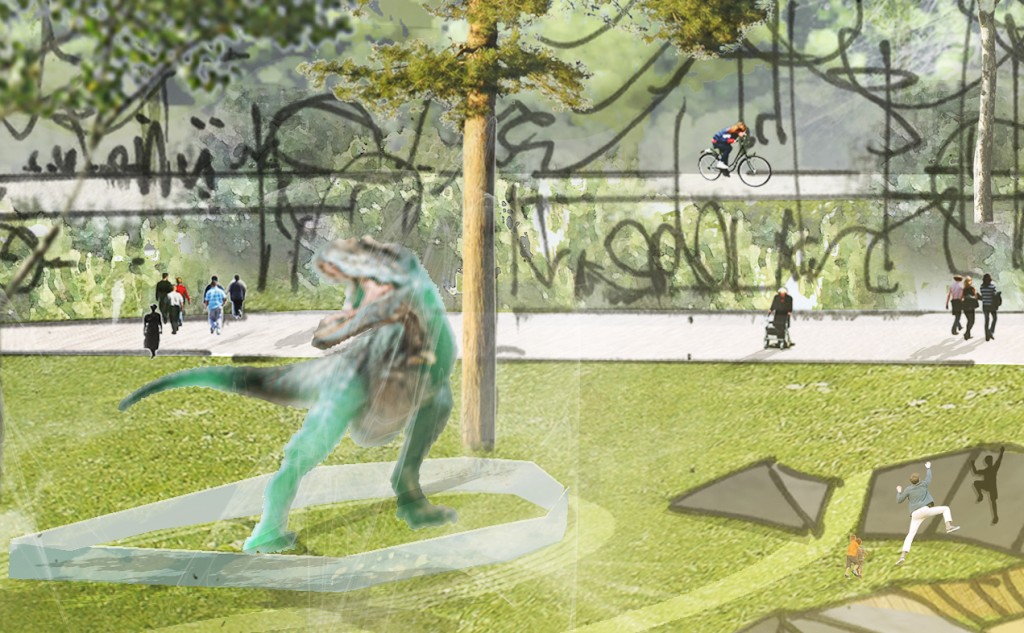
After the closure 2001 nature takes over. Among the victims of vandalism: Dinosaurs. Source: Grün Berlin GmbH.
Acquisition of the Spree Park by the City of Berlin
The same year, the city of Berlin acquired the park. In 2016 Berlin transferred planning, construction, maintainment and operation of a new park to the city-owned Grün Berlin-GmbH.
A framework plan for further development was presented in 2018 following a two-stage public participation process, by a working group led by landscape architects Latz und Partner.
“Nature, culture, art” -the new concept
As a new type of park, the Spree Park is a cornerstone for sustainable and green urban development for the southeastern Spree region. The historical layers of the park will be included in the new planning and redesigned by artists, architects, scenographers and landscape architects.
Striking elements from the history of the amusement park thus find their way into the conception of the new park.
-
- The red Ferris wheel is particularly significant. At 40 meters high, it towers above the treetops and can be seen from afar and becomes the landmark of Plänterwald.
- The village backdrop of Old England is also to be resurrected as a covered one for events, as is the central open-air theater from the GDR era for live concerts and events.
- The large water basin in the center is to be restored. Well-maintained open spaces with meadow character will provide space as sunbathing areas for play and recreation.
- The former whitewater course will be made accessible for nature observation, and the former Spreeblitz roller coaster will be opened for art exhibitions and installations.
Sustainable traffic concept
A traffic concept committed to the goals of sustainable tourism focuses on accessibility by public transport, improved connections for bicycle traffic and e-scooters, and a new landing stage for excursion boats. Several car parking spaces for people with disabilities are planned as well.
What are the costs of the park?
72 million Euros have been budgeted for the park by Grün Berlin GmbH. 20 million from state and federal GRW funds -funds for the improvement of the regional economic structure- are now available.
When will the park open?
At present, the “Eierhäuschen” excursion restaurant is being renovated in line with its status as a historic monument. The reopening is scheduled for 2023, followed by the opening of the largest central area in the Spree Park in 2024. The two main entrances in the north and the south open in 2026.
Guided tours giving an insight into the future layout of the new Spree Park are offered by Grün Berlin during the warmer months of the year.
Find more on the topic here
